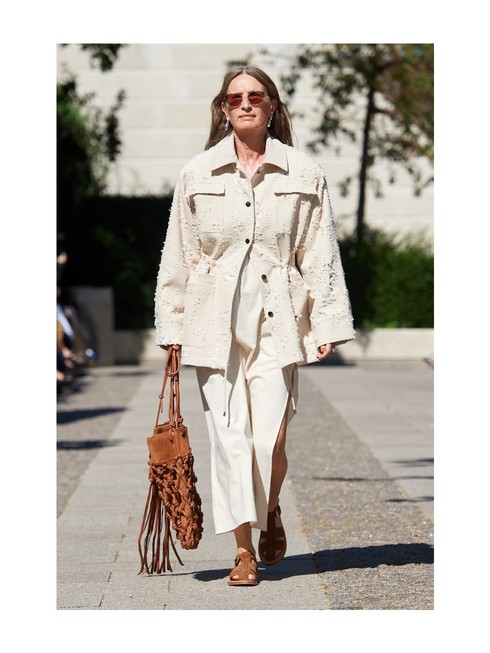
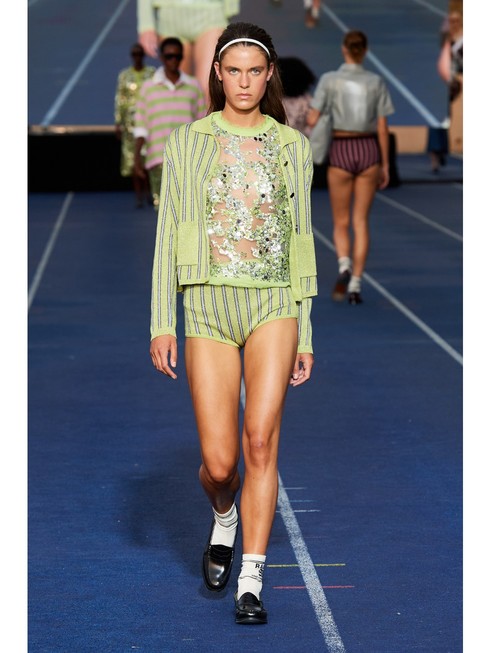

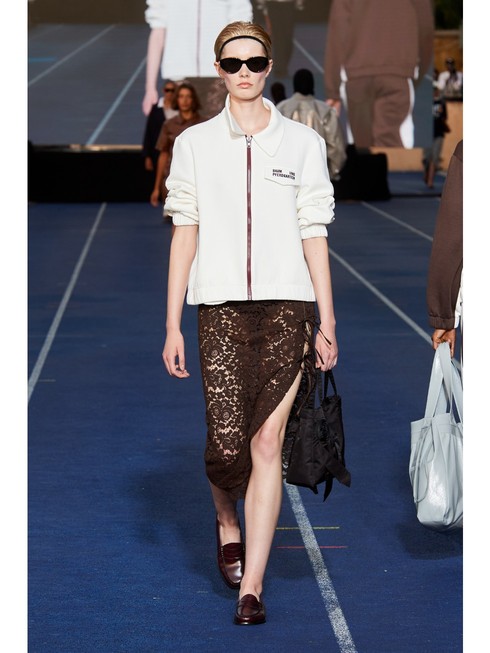
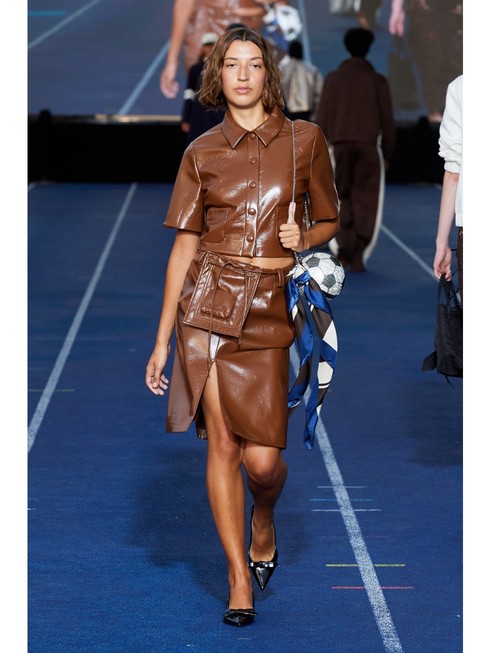

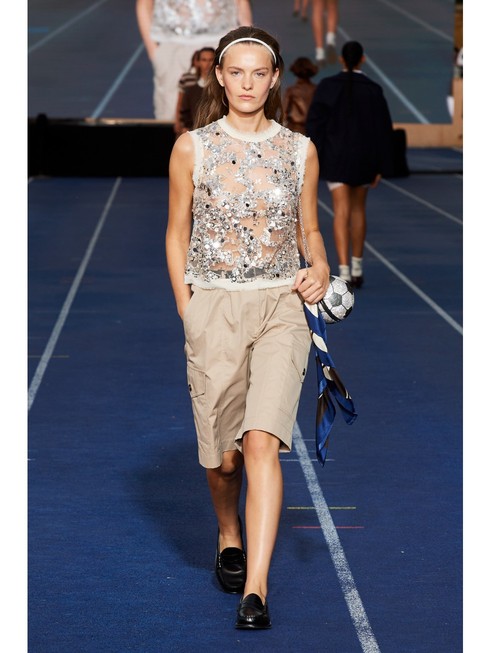



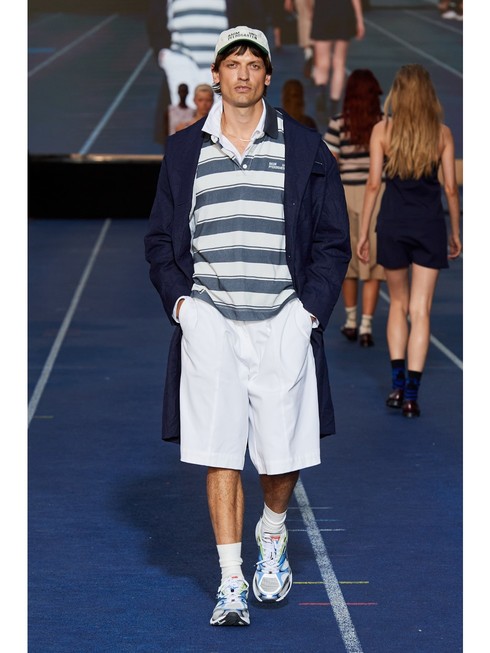
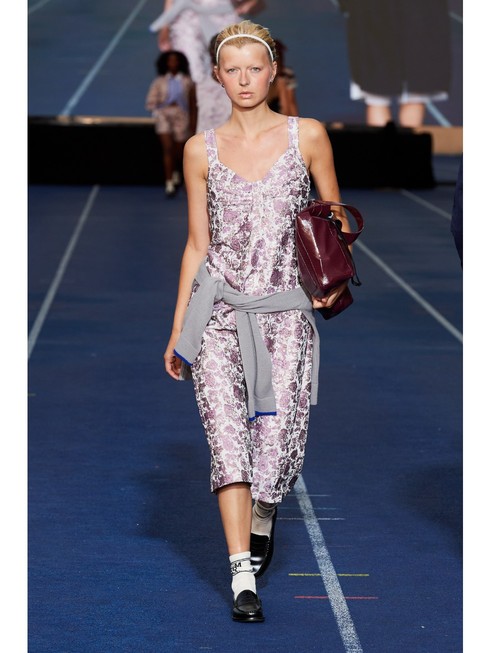
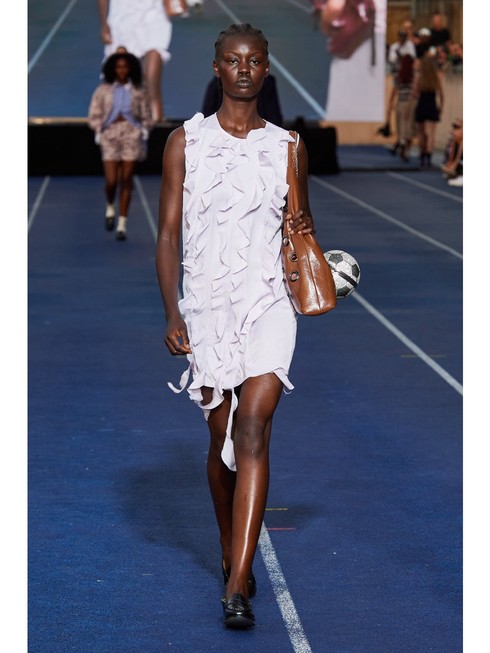

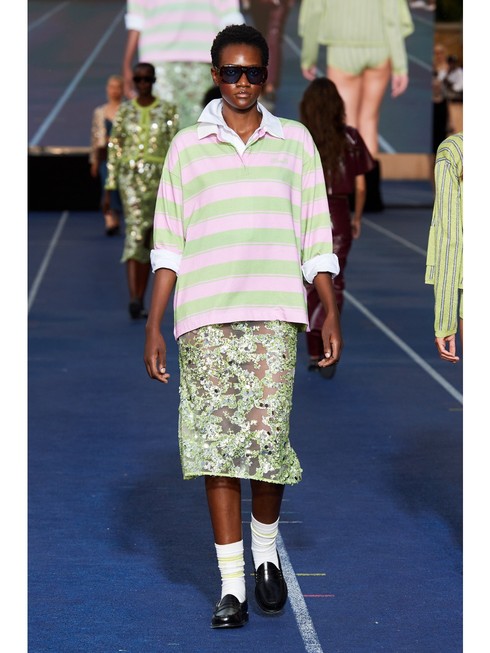



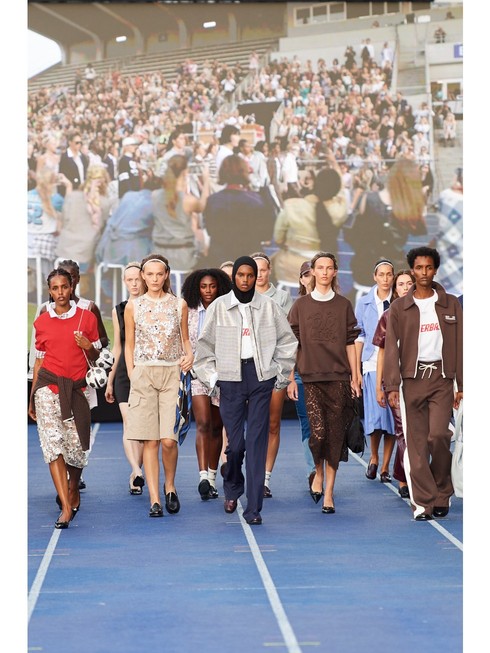
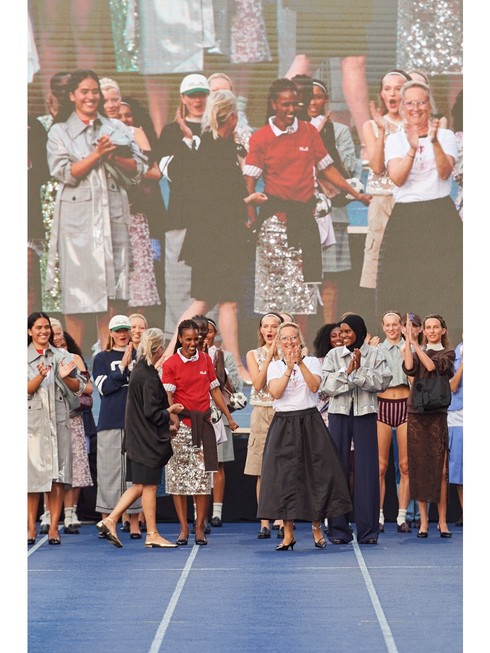


| All images by James Cochrane |
On the second day of CPHFW bohemian brand Lovechild 1979 debuted their SS25 collection. The models walked the runway wearing leather, sheer drapes and knits in a breezy but structured fashion. Before the show, Odalisque talked to Hanne Yoo Andersen, design manager, about the collection and the preparations for the show.
Ulrika Lindqvist: Please tell us about the process in creating the SS25 runway show?
Hanne Yoo Andersen: We wanted to somehow portray the narrative of “going to work” and “going home from work” and how our attire shifts and merges with the notion of being at/off work. The Lovechild 1979 SS25 show is located in Amaliehaven in the heart of Copenhagen. It has been important for us that the show location and choice of music should be seen as an extension of the concept of how we portray our different identities in our daily life.
UL: How did you choose the location for the runway show?
HYA:For us, the location and setting are a perfect example of showcasing that transition. We work very closely with the creative studio Alpine, which has been in charge of the creative direction for the show. Amaliehaven is right next to their office and was newly restored. It somehow seemed like an obvious opportunity to utilize an open green space that still had an urban feel to it.
UL: What does the SS25 collection represent and what was the main inspiration for this collection?
HYA:We have been aiming to give our take on “contemporary workwear” and how we see the workwear uniform being integrated into the wardrobe. In that context, we have been inspired by the post-minimal artist Eva Hesse and her take on everyday objects. She had a background in textile design before becoming an artist, which is very much present in a wide range of her artworks that have served as a great inspiration in developing our SS25 collection.We always focus on tactility rather than decoration, and in that sense, Hesse’s work served as great inspiration.
UL: What was the biggest challenge in creating your SS25 collection?
HYA: We continuously strive to work more sustainably, which always is a challenge, if not the biggest challenge in the overall industry. Nonetheless, it is a welcoming challenge that needs to be addressed and, for us, is an ongoing process.
UL: How would you describe the Lovechild 1979 customer?
HYA: The SS25 collection beautifully showcases our definition of the Lovechild 1979 customer, where sophistication meets practicality.
UL: What can we expect from Lovechild 1979 in the future?
HYA: The Lovechild 1979 brand will continue to reinterpret the quintessence of a woman's wardrobe by infusing vitality into classic dressing. We have, through the past seasons, been highlighting our take on Scandinavian minimalism, which is the foundation of the Lovechild 1979 DNA. Furthermore, fabric tactility and the duality between the traditional ideas of masculinity and femininity are interesting aspects that we will continue to evolve and explore.
